|

LOWER THE MAST by
Dave Hood, GMT2
USS McKean (DD 784)
The height from the waterline to the top of the mast aboard a
FRAM 1 destroyer is about one-hundred feet.
The height of San Diego’s Coronado Bridge is about
five-hundred feet, plus or minus a few.
Remember these facts. They are crucial to this story.
During the late 70’s, the U.S.S. McKEAN DD 784 was
home-ported in Seattle, Washington. We
were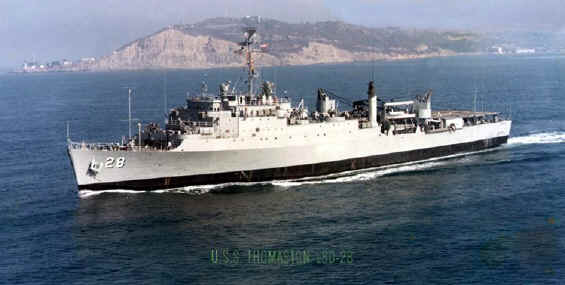 scheduled to make a transit to San Diego for exercises, training and repairs. At
the same time, the U.S.S. THOMASTON LSD 28 (Dock
Landing Ship-see at right) was in dry-dock at Seattle’s TODD
shipyard for a very long overhaul. So long in fact, that many of her 50 officers
and 642 sailors could have served their entire hitch and never had an
opportunity to go to sea. The old man of the THOMASTON asked our old man if some
of his junior sailors could make the voyage with us just so they could
experience sea-water going under their keel. The idea was to motivate them into
loving sea-life and, perhaps, make them want to re-enlist.
I think we took about 40 of them with us.
Entrusting a bunch of boot gator-squids into the care of a bunch of salty
tin-can sailors was about as wise as entrusting an outlaw motorcycle gang with a
case of beer. It’s just not going to be the same when you finally get it back.
scheduled to make a transit to San Diego for exercises, training and repairs. At
the same time, the U.S.S. THOMASTON LSD 28 (Dock
Landing Ship-see at right) was in dry-dock at Seattle’s TODD
shipyard for a very long overhaul. So long in fact, that many of her 50 officers
and 642 sailors could have served their entire hitch and never had an
opportunity to go to sea. The old man of the THOMASTON asked our old man if some
of his junior sailors could make the voyage with us just so they could
experience sea-water going under their keel. The idea was to motivate them into
loving sea-life and, perhaps, make them want to re-enlist.
I think we took about 40 of them with us.
Entrusting a bunch of boot gator-squids into the care of a bunch of salty
tin-can sailors was about as wise as entrusting an outlaw motorcycle gang with a
case of beer. It’s just not going to be the same when you finally get it back.
Now a FRAM can do 35 knots. If
we went in a straight line and didn’t stop, we could have made the transit in
2 ½ to 3 days. But we didn’t do
things that way. We had to
rendezvous here, steam there, operate with the KITTY HAWK, launch an ASROC or
two and shell San Clemente Island for at least 48 hours.
A typical trip to SoCal would take us about 10 days.
Now the more we did, the more spare time we had. (It’s really true,
idle hands are the devil’s workshop.) And the more spare time we had gave us
more opportunity to plan original ways of screwing with the new guys.
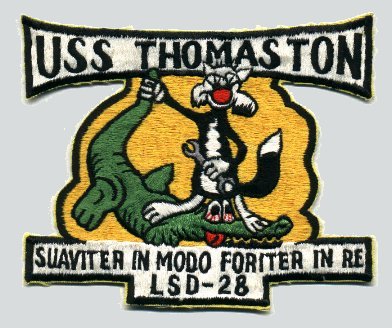 The snipes were
quite content to grease the boots entrusted in their care. We deck-types really
enjoyed getting the newbies sick. It’s
amazing how a mouthful of peach yogurt strategically spewed can turn a queasy
boot’s stomach inside out. Ditto
for chewing tobacco, smoked oysters, canned sardines, spaghetti sandwiches and
the all-time favorite, cheap cigars. The snipes were
quite content to grease the boots entrusted in their care. We deck-types really
enjoyed getting the newbies sick. It’s
amazing how a mouthful of peach yogurt strategically spewed can turn a queasy
boot’s stomach inside out. Ditto
for chewing tobacco, smoked oysters, canned sardines, spaghetti sandwiches and
the all-time favorite, cheap cigars.
After almost two weeks at sea, the ship set the “Sea and Anchor” detail
as it prepared to pull into San Diego. Weapons department handled the fan-tail
lines, lines 4,5 & 6, and I was in charge of the fan-tail detail.
“Sea and Anchor” is set about an hour before pulling into port. It
consisted of taking the mooring lines off of the storage reels, laying them on
the deck, putting the bight out through the chock, soaking the heaving line,
standing around for about an hour and praying that a sailboat full of girls will
come by and flash us.
When you enter San Diego bay, the rugged rocks of Point Loma are to your
port and a shrink-wrapped F-4 Phantom will mark the start of Naval Air Station
Coronado to starboard. You will
make a gradual turn to starboard and will eventually be heading due south. The
industrial port of San Diego will then be on your port and NAS Coronado will
still be on your starboard. Ahead will be the Coronado Bay Bridge that connects
San Diego proper with Coronado Island. (Coronado is actually a peninsula.)
Beyond the bridge is Naval Station San Diego, (a.k.a. “32nd
street”, a.k.a. “the base.”)
Remember what I said about idle hands? Remember what I said about the
line-handlers standing around? Remember what I said about screwing with the
boots? It all comes together here.
The Coronado Bay bridge loomed ahead, perhaps 2 miles away. It’s span,
from San Diego to port and Coronado to starboard, is immense. I started looking
at the bridge. I would shift my gaze to the shore. I would then study our mast.
Back to the bridge, to the shore and then to the mast. FTG2 Dave “Dog”
Carlson and I shared the same warped personality. He knew that the gears in my
head were 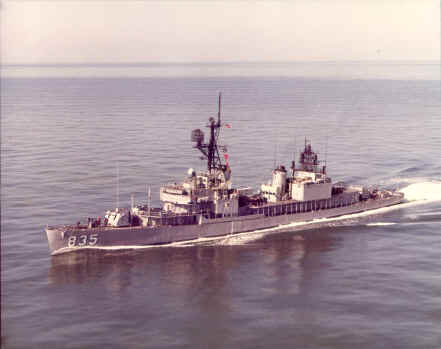 spinning,
planning, conniving. Without saying a word, he joined me in my observation of the
bridge, the shore and then the mast. The rest of fantail vets knew something was
up and they too joined in our studying first the bridge, then the shore and
finally, the mast. It worked. One
of the THOMASTON’s boots was
suckered in. Not wanting to look
stupid, he too started looking at the bridge, the shore and then the mast.
I finally said to Carlson, “Dog, is the tide in
or out?” spinning,
planning, conniving. Without saying a word, he joined me in my observation of the
bridge, the shore and then the mast. The rest of fantail vets knew something was
up and they too joined in our studying first the bridge, then the shore and
finally, the mast. It worked. One
of the THOMASTON’s boots was
suckered in. Not wanting to look
stupid, he too started looking at the bridge, the shore and then the mast.
I finally said to Carlson, “Dog, is the tide in
or out?”
Taking a hard long look, Carlson scanned the shoreline and proclaimed,
“The tide is in.” With that, we
once again looked at the bridge and then we took a long look at the ship’s
mast. From our perspective, way down low, all the way aft, the top of the mast
appeared to be a few feet taller then the bottom of the Coronado Bay bridge.
I turned to the fantail phone talker and said, “Tell main control to
lower the mast fifteen feet so we can clear the bridge.” The phone talker then
spoke into his sound powered phone (without depressing the transmit button) and
said quite loudly, “Fantail, main control.
Fantail, main control. FANTAIL, MAIN CONTROL!” He turned to me and
said, with rising panic in his voice, “Hood, main control ‘ain’t answerin’.”
I stole another glance at the oncoming bridge, the high-water mark on the
shoreline and at our all-too-tall mast. I
turned to the THOMASTON boot and said, in my best authoritarian voice, “You!
Quick! Run down to main control and tell them they need to lower the ship’s
mast fifteen feet or else we won’t clear the Coronado Bay Bridge!”
He looked at me in disbelief and said, “Where’s main
control?”
STGSN Ken Piper jumped in and said, “I’ll show you.” He lead the boot
forward down the main passageway until they came to the scuttle for the forward
engine room – Main Control.
For you landlubbers and Coast Guardsmen, let me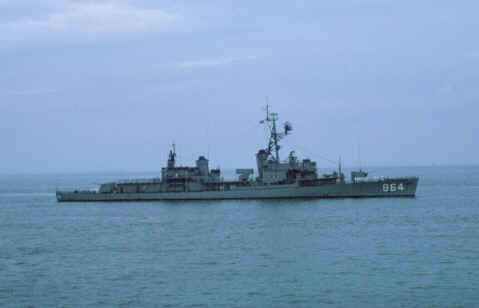 divert and give you a quick tour of a FLETCHER/SUMNER/GEARING-class (see
right) power plant. From stem to stern, you have the forward fire room
with boilers 1&2. Aft of that is the forward engine room that contained the
steam turbine and reduction gears that powered the starboard propeller shaft.
The forward engine room was known as “Main Control.”
divert and give you a quick tour of a FLETCHER/SUMNER/GEARING-class (see
right) power plant. From stem to stern, you have the forward fire room
with boilers 1&2. Aft of that is the forward engine room that contained the
steam turbine and reduction gears that powered the starboard propeller shaft.
The forward engine room was known as “Main Control.”
Directly to the rear was the after fire room with its boilers 3&4.
Finally you come to the after engine room with its machinery that drove the port
propeller shaft. To maintain
watertight integrity, there was no direct way for a man to go from one of these
spaces to another. The only way in and out was through a 24”oval scuttle hatch
that, on a FRAM, lead from the main passageway and down twenty feet into the
engineering spaces. These spaces
are manned by snipes and any seasoned salt will quickly tell a new boot that
snipes are really scary.
Piper pointed down the scuttle and told the boot, “Down there is Main
Control.” The boot peered down and a blast of hot air rose up into his face.
The air was tinted with lubricating oil. The noise emanating from there sounded
like a freight train going through a tunnel. The scuttle was tiny and the ladder
was vertical. And there were snipes
down there.
Piper later described the look on the boot’s face as that of a man shown
the portal to Hades. The boot
paused, not wanting to go any further, Piper said to him, “Well?”
Realizing that the safety of the ship depended upon him, the boot went
down the ladder, very, very slowly. Each rung took him deeper into the bowels of
the ship, deeper into snipe country. As
he reached the bottom of the ladder, the Machinist Mates on watch came alive
like the lions in the zoo at feeding time. The lead MM bellowed out, “What the
hell are you doing down here?” The
boot realized that he had but one chance to save his mortal soul. To be heard
over the whine of the turbines, he yelled out, plead almost, “Hood said you
need to lower the mast fifteen feet so we can clear the Coronado Bay bridge.”
He almost added, “Please don’t kill me.”
The 1st class MM, forewarned of our prank, bellowed back, “+)#*
@&*%, we don’t have that valve anymore. It was moved to the after fire room
during the last re-fit!” (First class Machinist Mates always speak in
exclamation marks.)
“Where is the after fire room?”
“($*$&+=~(*?%}, the next hole back!”
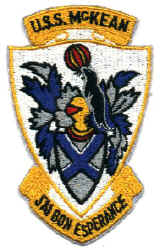 Now panic
really set in. The only thing scarier then Machinist Mate-type snipes are Boiler
Tech-type snipes. They are rumored
not to even like sunlight, fresh air or hot showers.
Still, it was dangerous to linger in any snipe country, so he went up the
ladder as if ‘Abandon Ship” had just been called. He was no sooner up when
Main Control got on the horn to the after fire room and gave them a head’s up.
The BTs in the after fire room sent him to the Oil King shack. The Oil King sent
him to DC Central. DC sent him to the Signal Bridge. The QMs sent him to the
Bos’n Locker. The BMs sent him to Chief’s Quarters. The Goat Locker sent him
to after-steering. He got lost
going to after-steering and ended up back on the fantail…..just as we were
passing under the bridge with about four-hundred feet to spare. Now panic
really set in. The only thing scarier then Machinist Mate-type snipes are Boiler
Tech-type snipes. They are rumored
not to even like sunlight, fresh air or hot showers.
Still, it was dangerous to linger in any snipe country, so he went up the
ladder as if ‘Abandon Ship” had just been called. He was no sooner up when
Main Control got on the horn to the after fire room and gave them a head’s up.
The BTs in the after fire room sent him to the Oil King shack. The Oil King sent
him to DC Central. DC sent him to the Signal Bridge. The QMs sent him to the
Bos’n Locker. The BMs sent him to Chief’s Quarters. The Goat Locker sent him
to after-steering. He got lost
going to after-steering and ended up back on the fantail…..just as we were
passing under the bridge with about four-hundred feet to spare.
I can honestly say that I have never seen anyone as mad as that kid was. He
was so mad he didn’t know whether to cry, kill, hide or jump over the side.
He should have been grateful that the snipes didn’t grease him.

 

|
